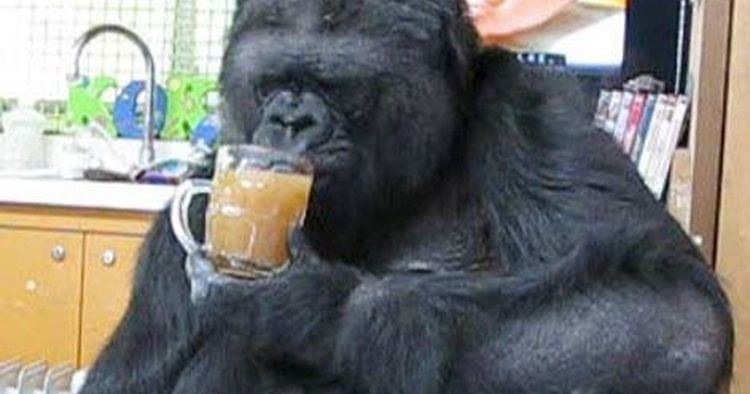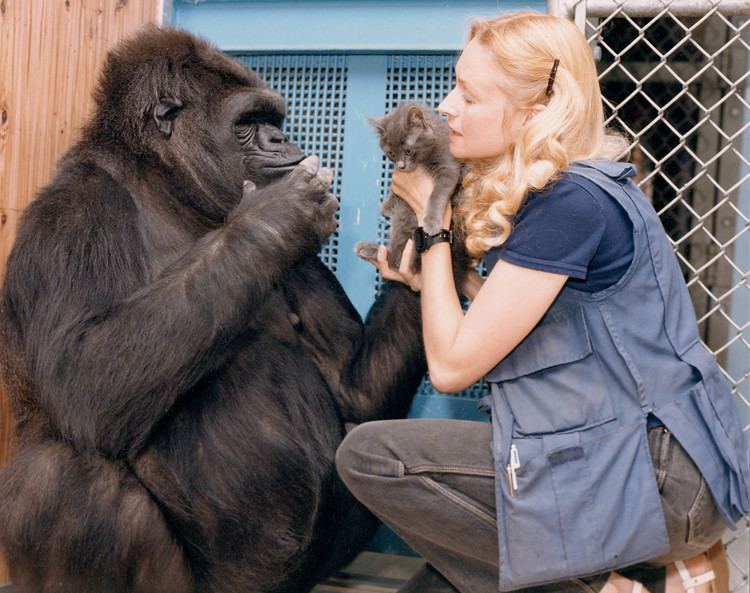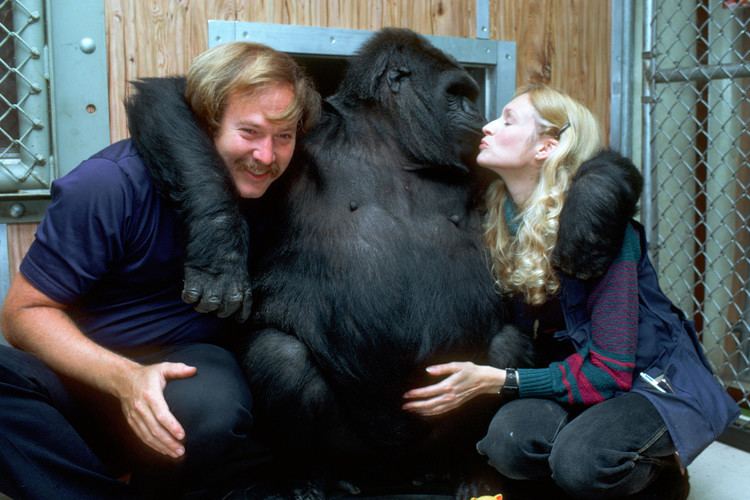Sex Female | ||
 | ||
Species Western lowland gorilla Born July 4, 1971 (age 45)San Francisco Zoo, US ( 1971-07-04 ) | ||
Hanabiko "Koko" (born July 4, 1971) is a female western lowland gorilla who is known for having learned a large number of hand signs from a modified version of American Sign Language (ASL).
Contents

Her caregiver, Francine "Penny" Patterson, reports that Koko is able to understand more than 1,000 signs of what Patterson calls "Gorilla Sign Language" (GSL). In contrast to other experiments attempting to teach sign language to non-human primates, Patterson simultaneously exposed Koko to spoken English from an early age. Reports state that Koko understands approximately 2,000 words of spoken English, in addition to the signs. Koko's life and learning process has been described by Patterson and some of her collaborators in a number of books, peer reviewed articles, and on a website.

As with other great ape language experiments, the extent to which Koko has mastered and demonstrates these signs was disputed in a study published in 1999. But it is generally accepted that she does not use syntax or grammar, and that her use of language does not exceed that of a young human child.

Koko was born at the San Francisco Zoo and has lived most of her life in Woodside, California, although a move to a sanctuary on Maui, Hawaii, has been planned since the 1990s. The name Hanabiko (花火子, literally "fireworks child") is a reference to her date of birth, the Fourth of July. Koko also gained publicity when she reportedly adopted a kitten (1985).

Life
Koko was originally loaned to Francine Patterson for her doctoral research, but has stayed with Patterson ever since, supported by The Gorilla Foundation. Koko's weight is much higher than would be normal for a gorilla in the wild, which may be due to her diet which includes food products intended for human consumption, including processed meat and sweets. For a while, Koko lived with another gorilla, Michael, who also learned sign language but died in 2000. She now lives with a male gorilla, Ndume.
Use of language
Patterson claims that Koko's use of signs and her actions, which are consistent with her use of signs, indicate she has mastered the use of sign language. Other researchers argue that she does not understand the meaning behind what she is doing and learns to complete the signs simply because the researchers reward her for doing so (indicating that her actions are the product of operant conditioning). Another concern that has been raised about Koko's ability to express coherent thoughts through signs is that interpretation of the gorilla's conversation is left to the handler, who may see improbable concatenations of signs as meaningful. For example, when Koko signs "sad" there is no way to tell whether she means it with the connotation of "How sad." or if she has no syntax. Following Patterson's initial publications in 1978, a series of critical evaluations of her reports of signing behavior in great apes argued that video evidence suggested that Koko was simply being prompted by their trainers' unconscious cues to display specific signs, in what is commonly called the Clever Hans effect. Such debate requires careful consideration of what it means to "learn" or "use" a language (see Animal language for further discussion).
Patterson has reported that Koko has made several complex uses of signs that suggest a more developed degree of cognition than is usually attributed to non-human primates and their use of communication. For example, Koko has been reported to use displacement (the ability to communicate about objects not currently present), signing the sign for "baby" the day after her baby was removed from her. At age 19, Koko was also able to pass the mirror test of self recognition, which most other gorillas fail. She has also been reported to relay personal memories. Koko has also been reported to use meta-language, being able to use language reflexively to speak about language itself, signing "good sign" to another gorilla who successfully used signing. Koko has also been reported to use language deceptively, and to use counterfactual statements for humorous effects, suggesting an underlying theory of other minds.
Patterson also reports that she has documented Koko inventing new signs to communicate novel thoughts. For example, she says that nobody taught Koko the word for "ring", but to refer to it, Koko combined the words "finger" and "bracelet", hence "finger-bracelet".
Criticism from some scientists centers on the fact that while publications often appear in the popular press about Koko, scientific publications with substantial data are fewer in number.
Koko's training began at the age of 1, and now, according to Patterson, she can use more than 1,000 signs. A bonobo named Kanzi, who had learned to communicate using a keyboard with lexigrams, picked up some sign language from watching videos of Koko; Kanzi's researcher, Sue Savage-Rumbaugh, did not realize he had done so until Kanzi began signing to anthropologist Dawn Prince-Hughes, who had previously worked closely with gorillas.
Koko's pets
Koko is one of the few non-humans known to keep a pet. Researchers at The Gorilla Foundation said that Koko asked for a cat for Christmas in 1983. Ron Cohn, a biologist with the foundation, explained to the Los Angeles Times that when she was given a lifelike stuffed animal, she was less than satisfied. She did not play with it and continued to sign "sad." So on her birthday in July 1984, she was able to choose a kitten from a litter of abandoned kittens. Koko selected a gray male Manx and named him "All Ball". Penny Patterson, who had custody of Koko and who had organized The Gorilla Foundation, wrote that Koko cared for the kitten as if it were a baby gorilla. Researchers said that she tried to nurse All Ball and was very gentle and loving. They believed that Koko's nurturing of the kitten and the skills she gained through playing with dolls would be helpful in Koko's learning how to nurture an offspring.
In December of that same year, All Ball escaped from Koko's cage and was hit and killed by a car. Later, Patterson said that when she signed to Koko that All Ball had been killed, Koko signed "Bad, sad, bad" and "Frown, cry, frown, sad". Patterson also reported later hearing Koko making a sound similar to human weeping.
In 1985, Koko was allowed to pick out two new kittens from a litter to be her companions. The animals she chose, she named "Lipstick" and "Smoky", were also Manxes. Koko picked the name after seeing the tiny orange Manx for the first time. When her trainer asked the meaning of the name, Koko answered, Lips lipstick. Dr. Patterson was confused until she realized that Lips had a pink nose and mouth, unlike All Ball's gray markings. Koko picked Smoky's name because the kitten looks like a cat in one of the gorilla's books.
More recently, to celebrate her birthday in July 2015, Koko was presented another litter of kittens. Picking two she named them Miss Black and Miss Grey.
Media
Koko and Dr. Patterson's work with her have been the subject of several books and documentaries.
